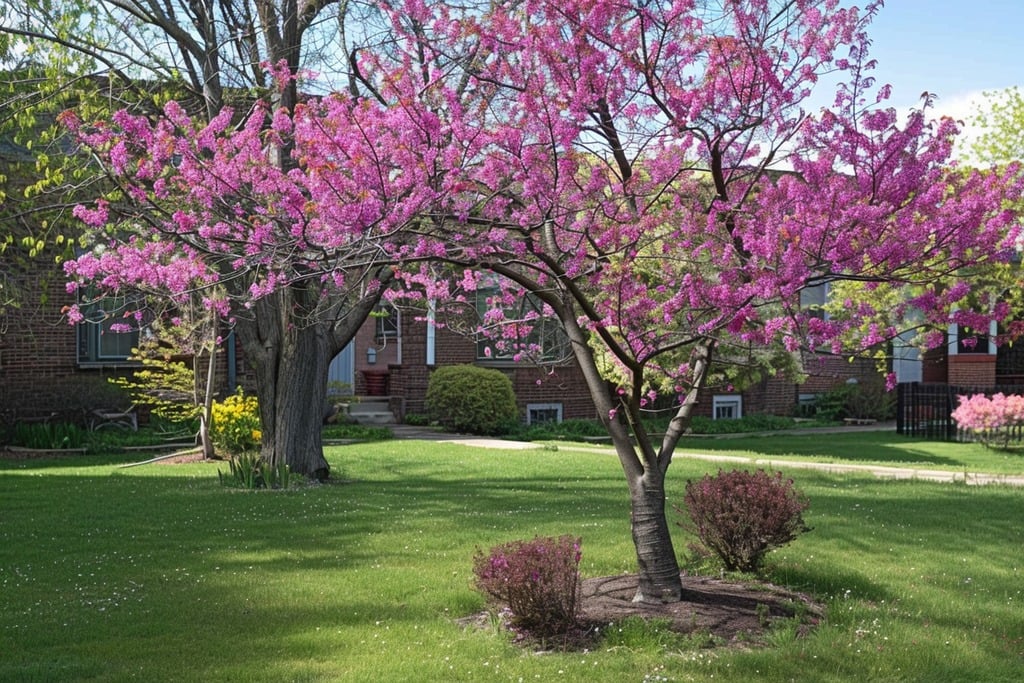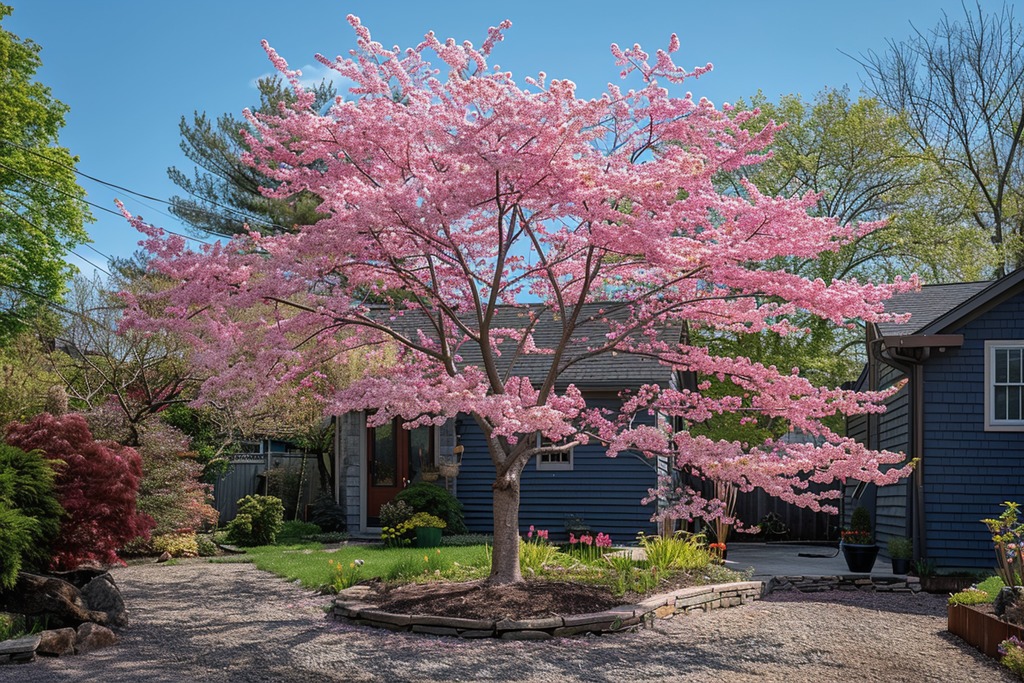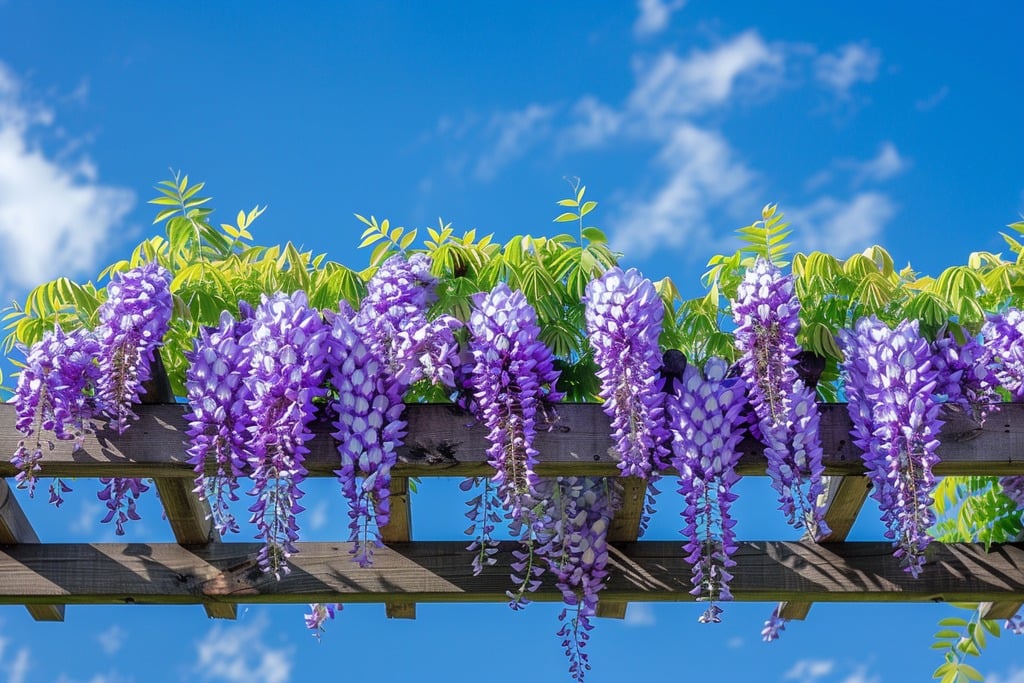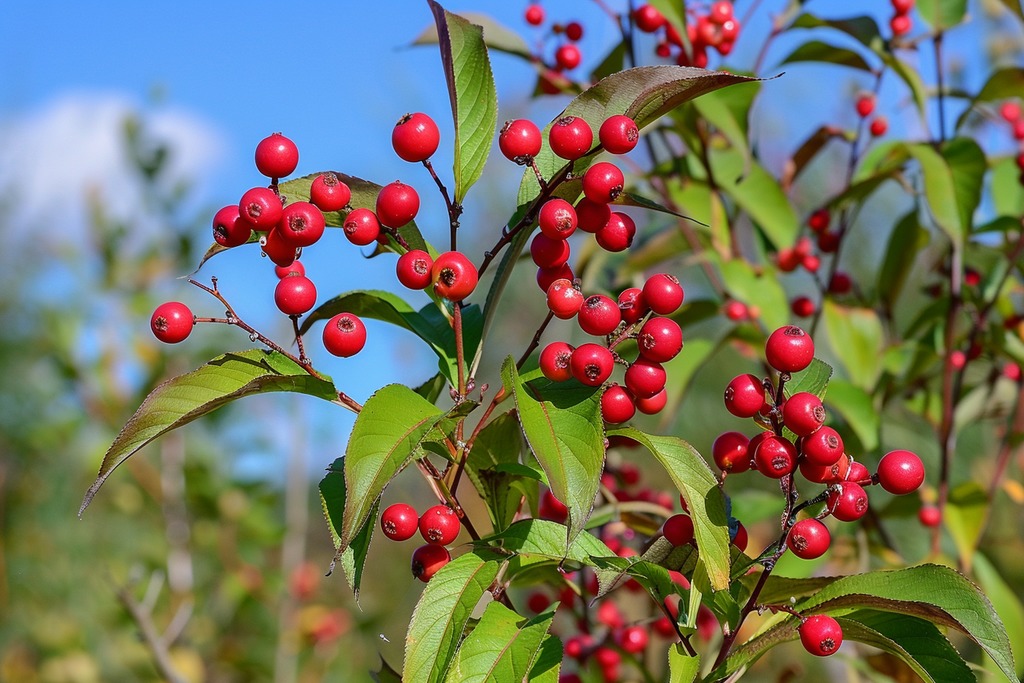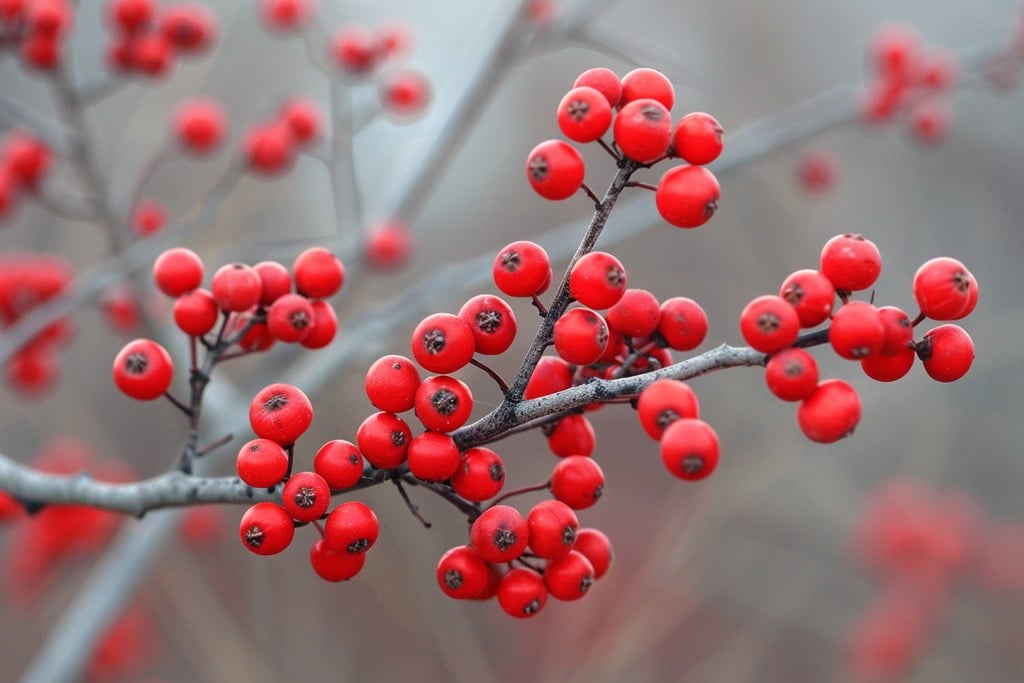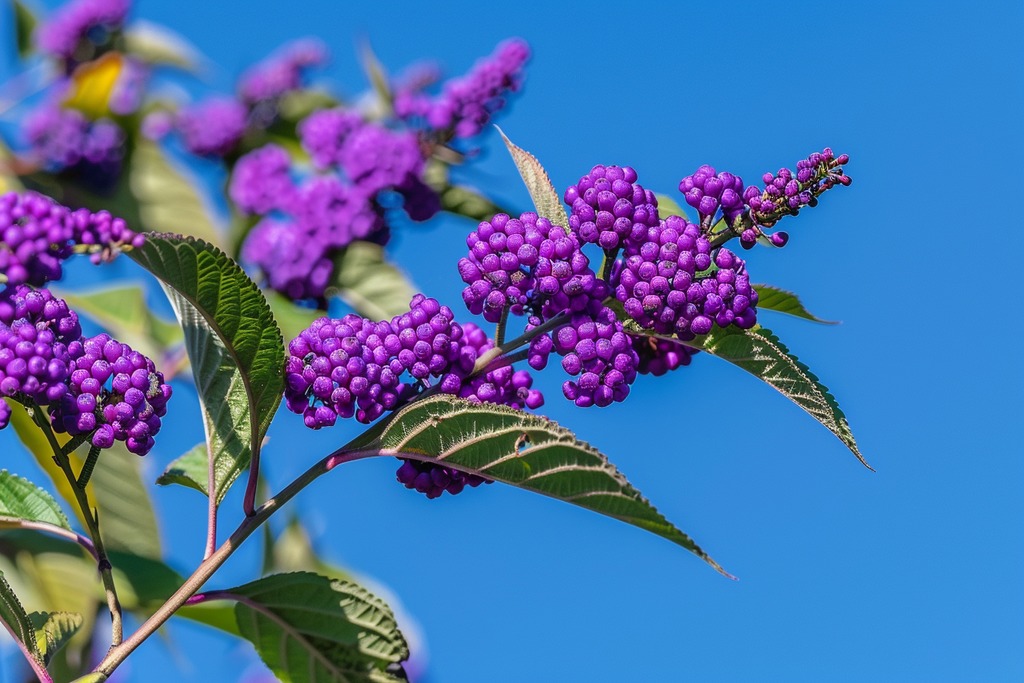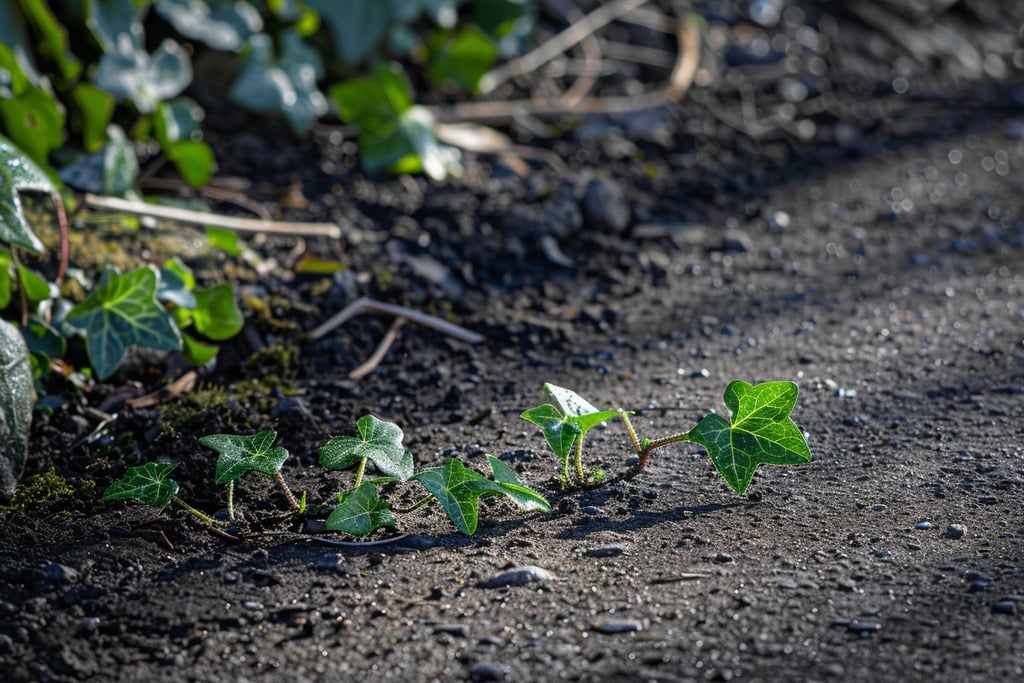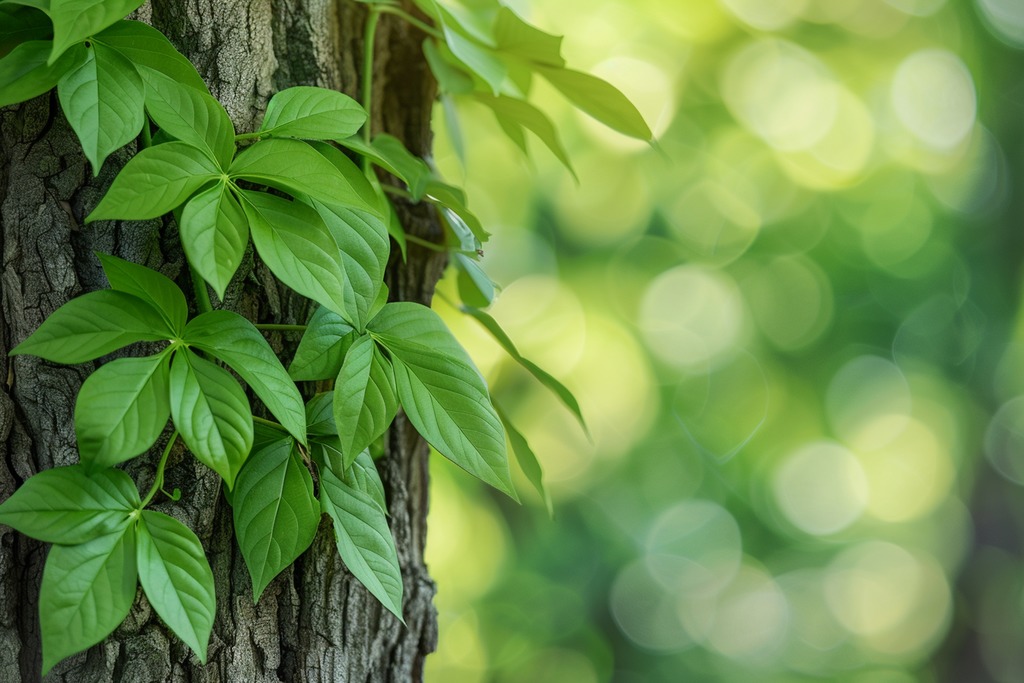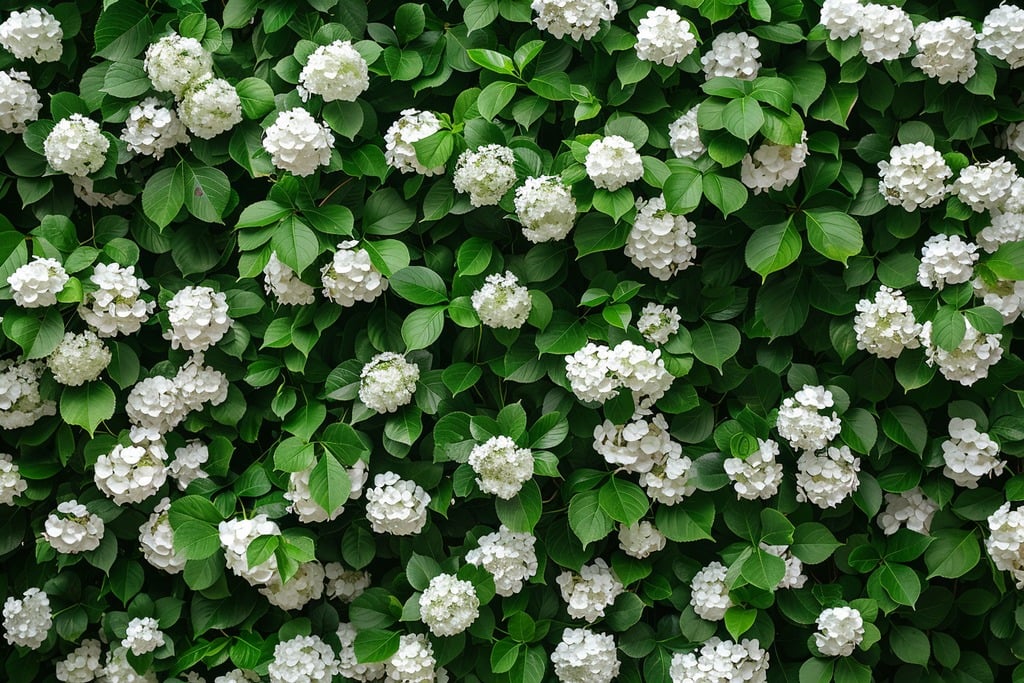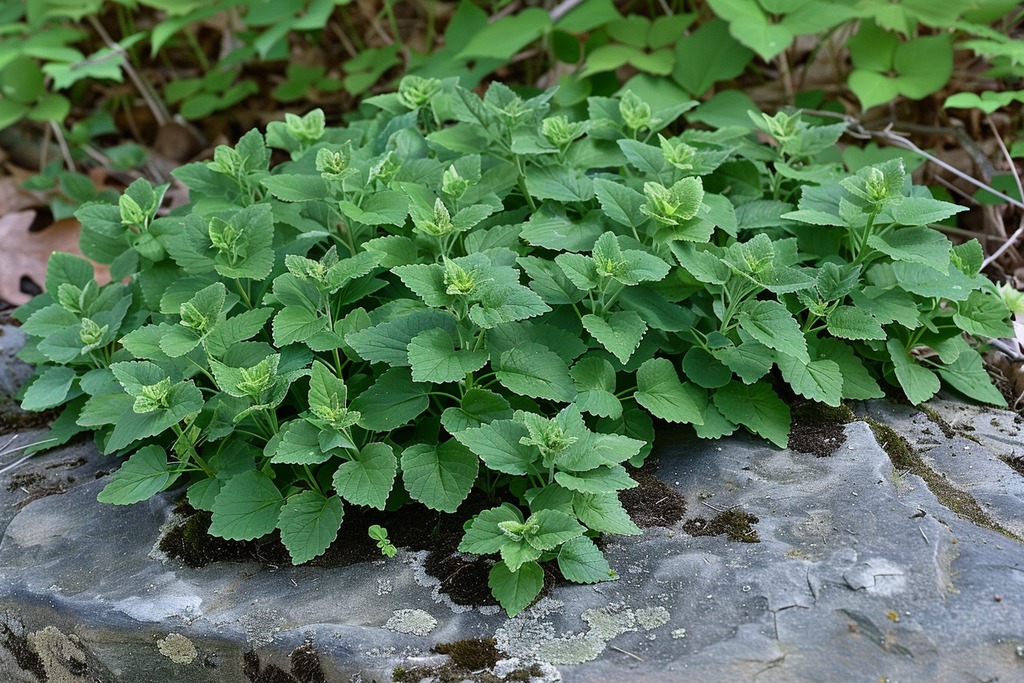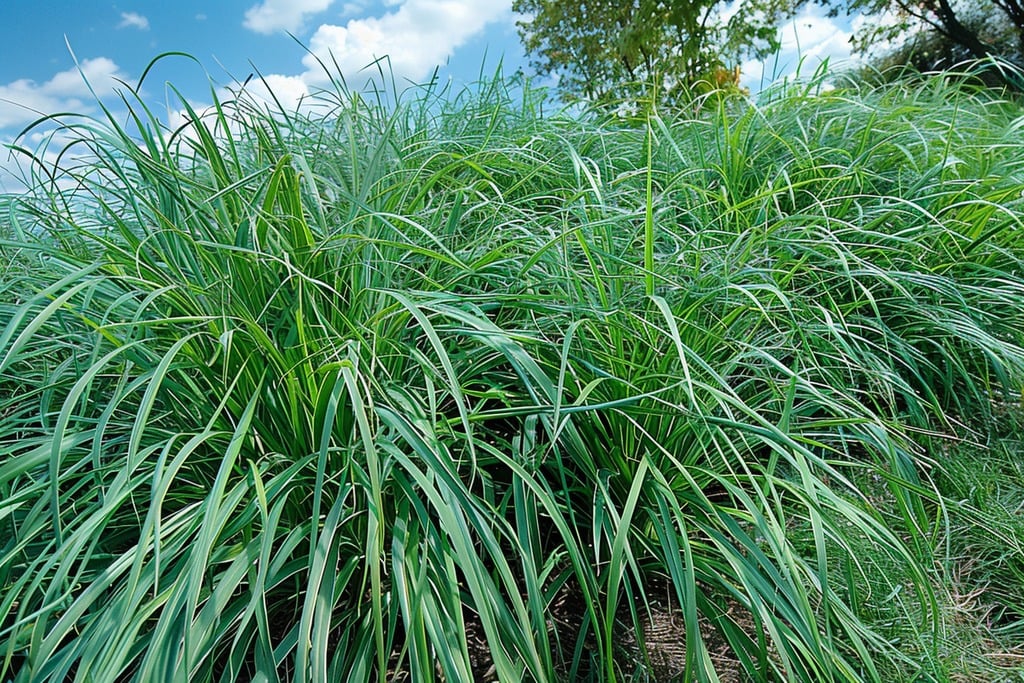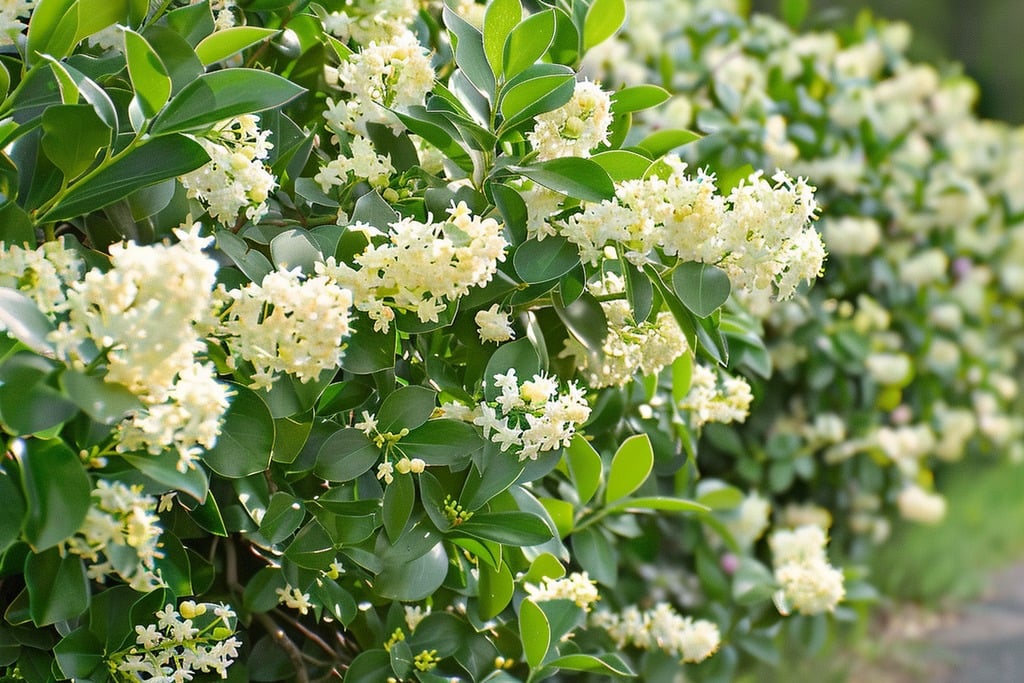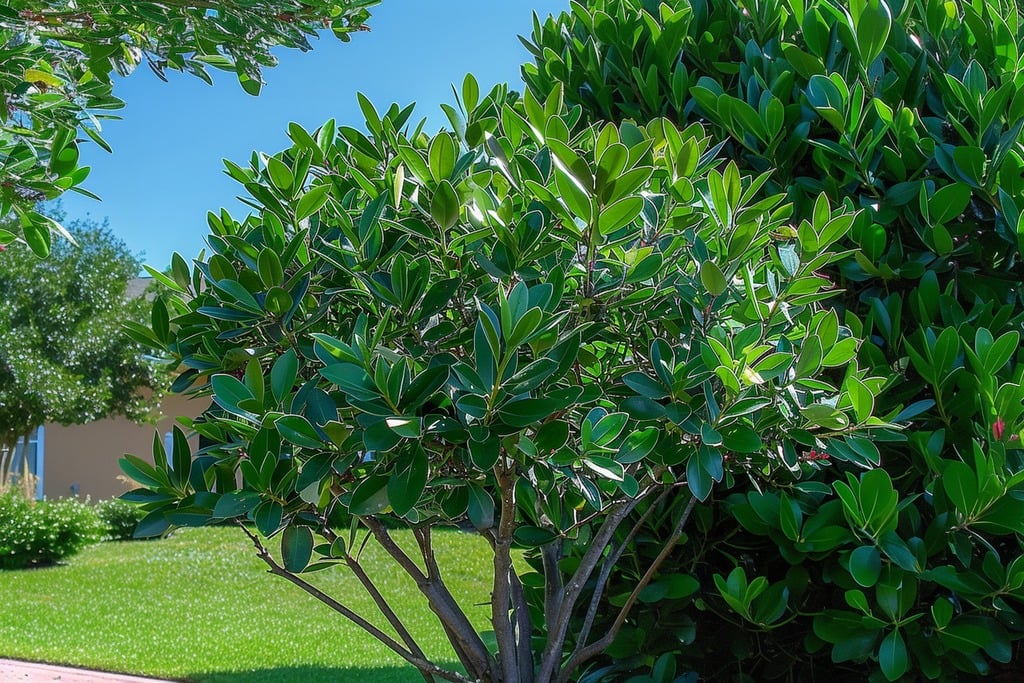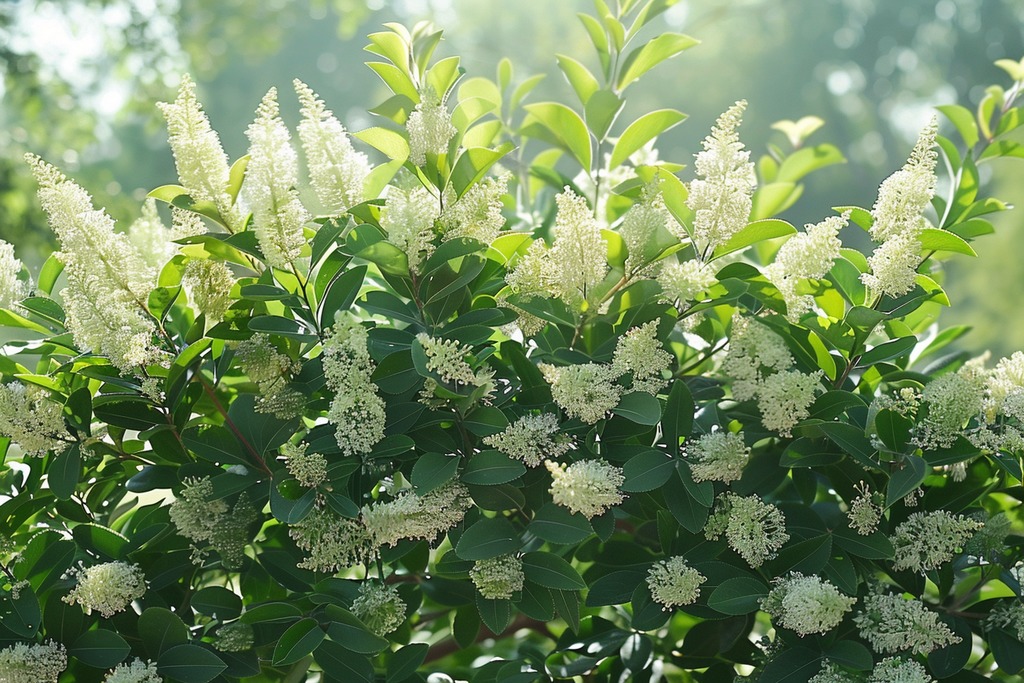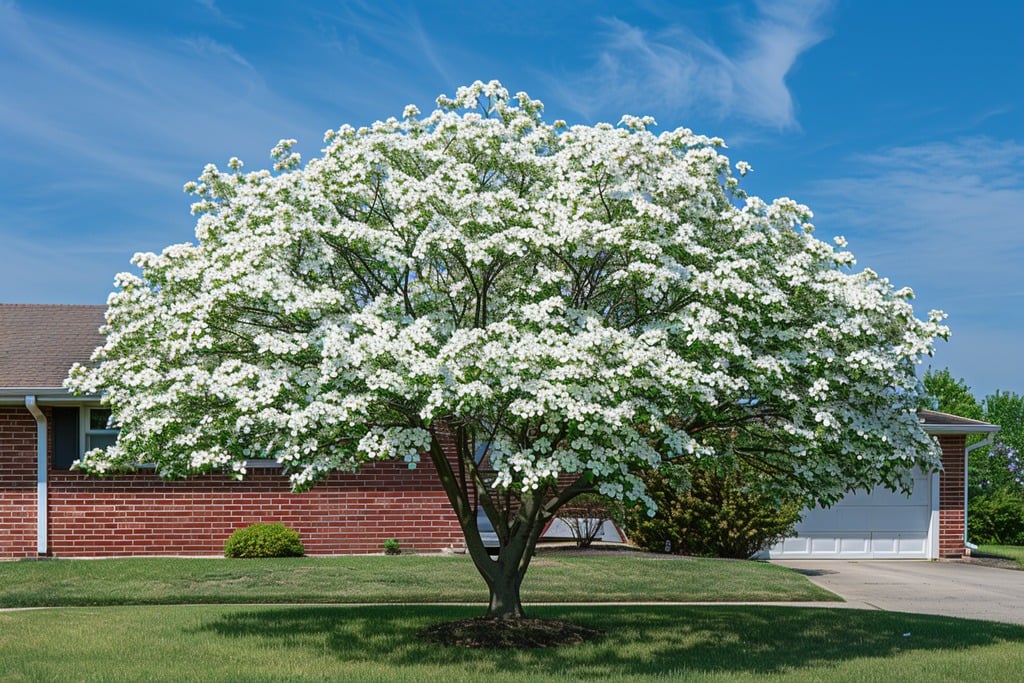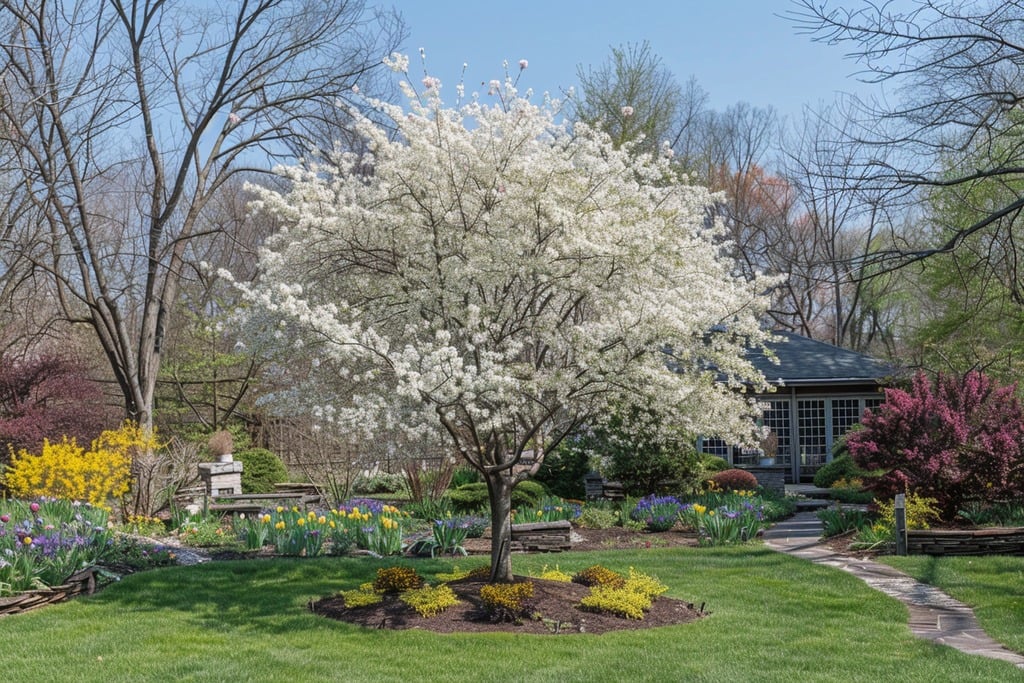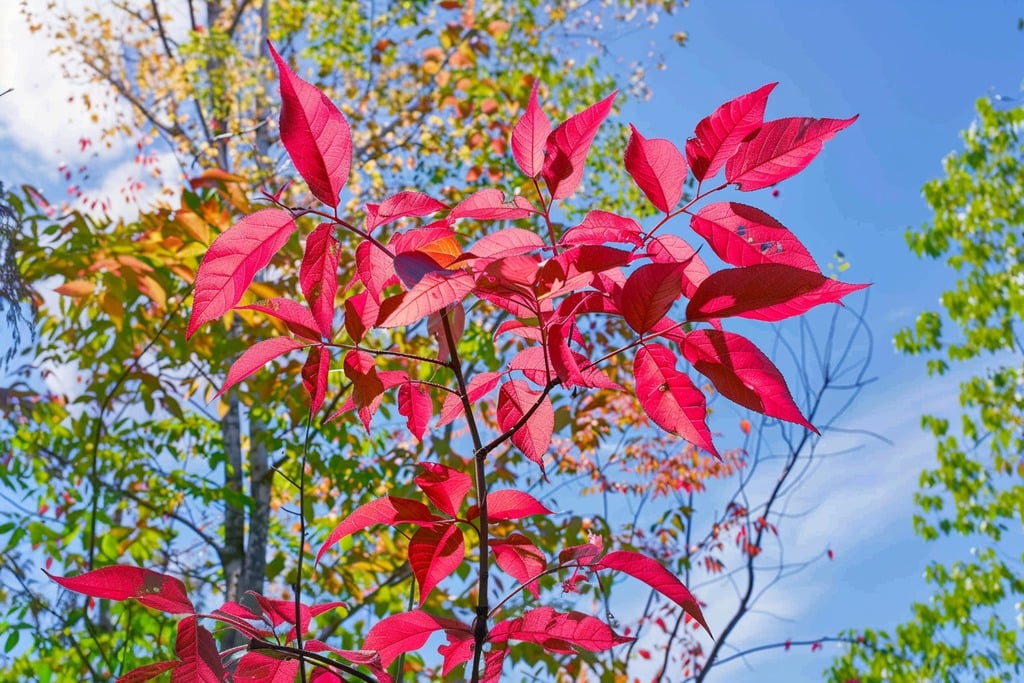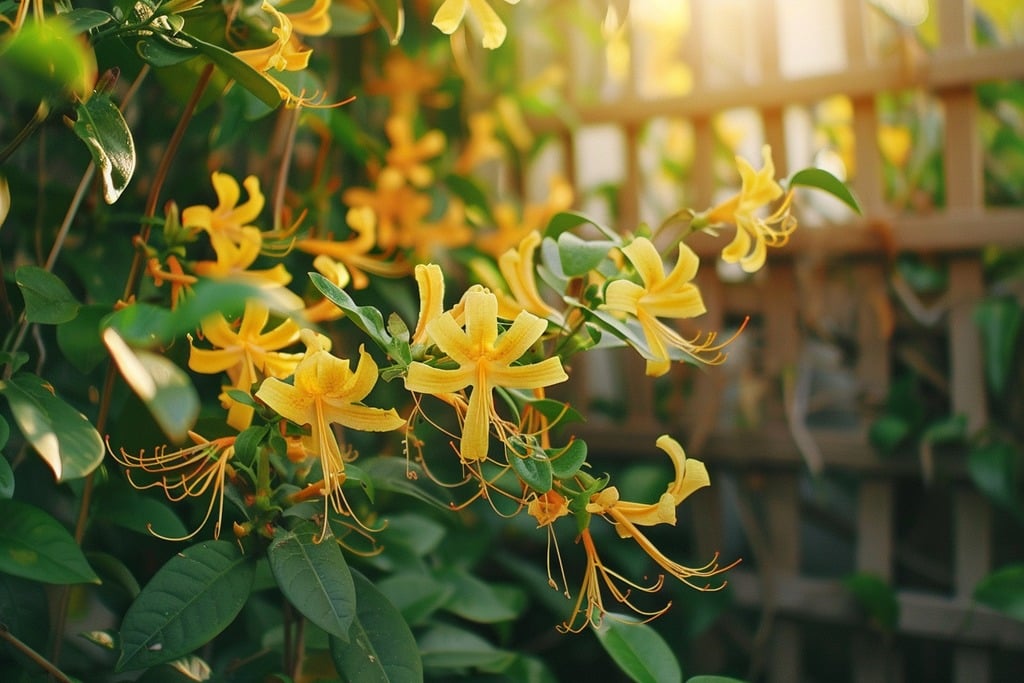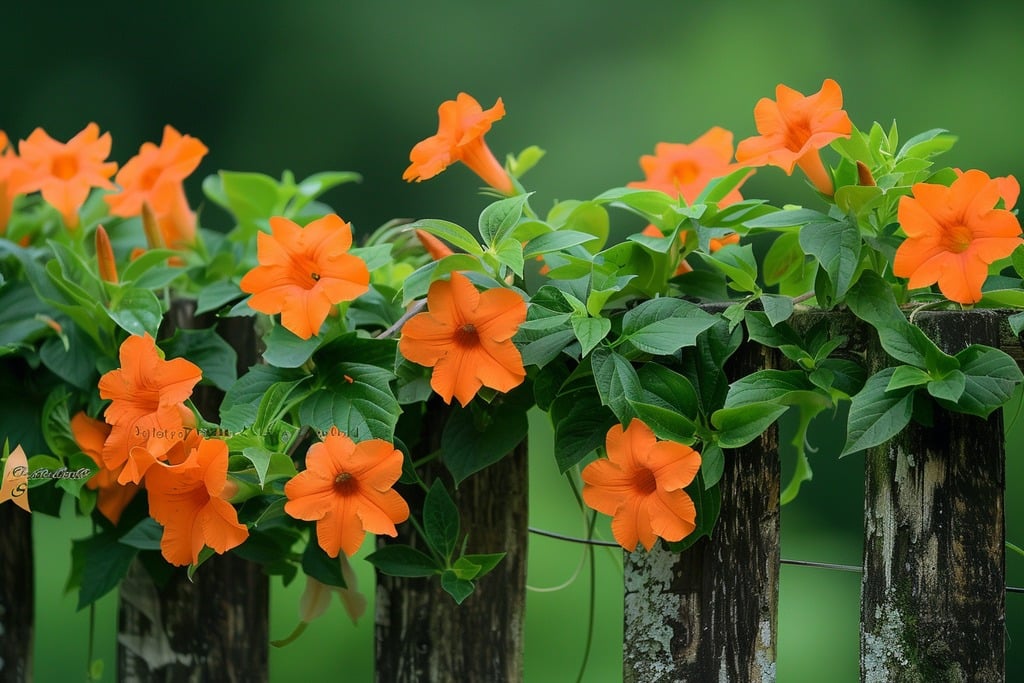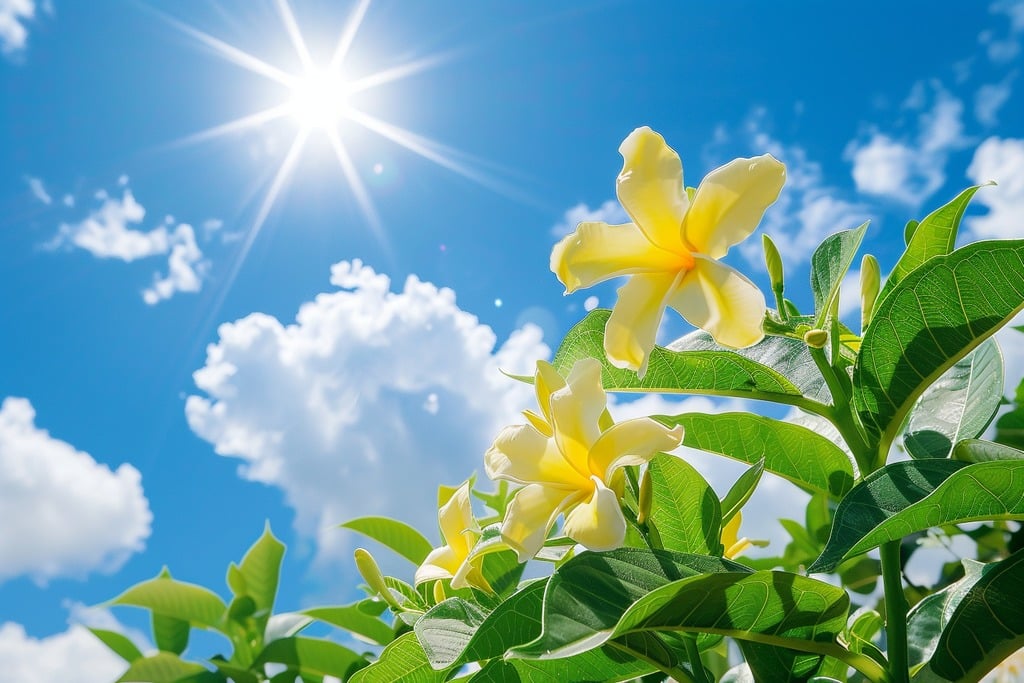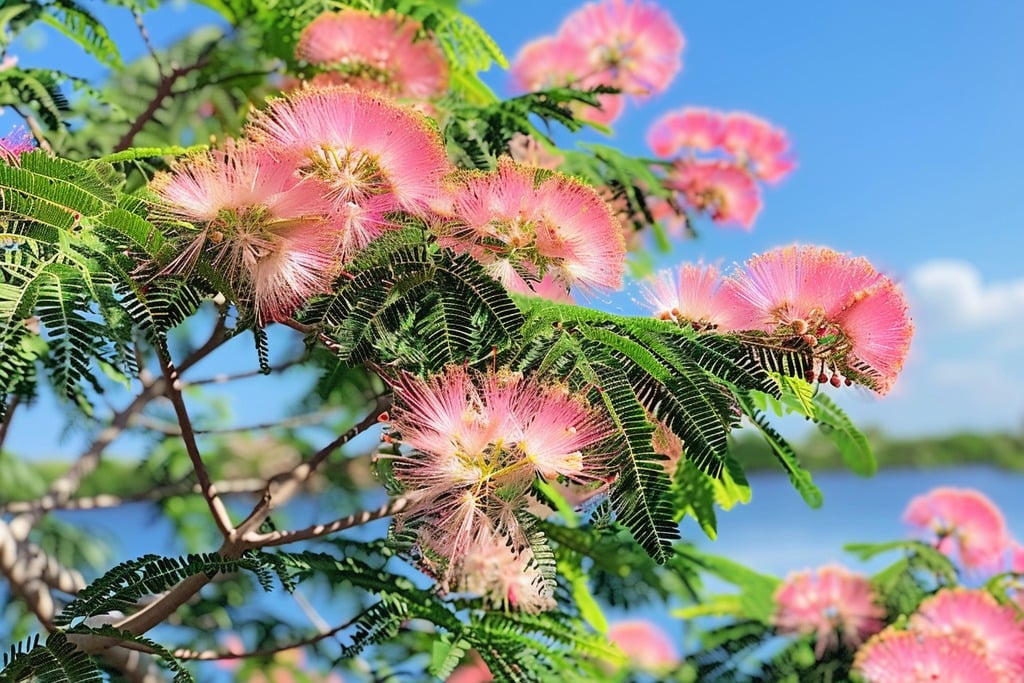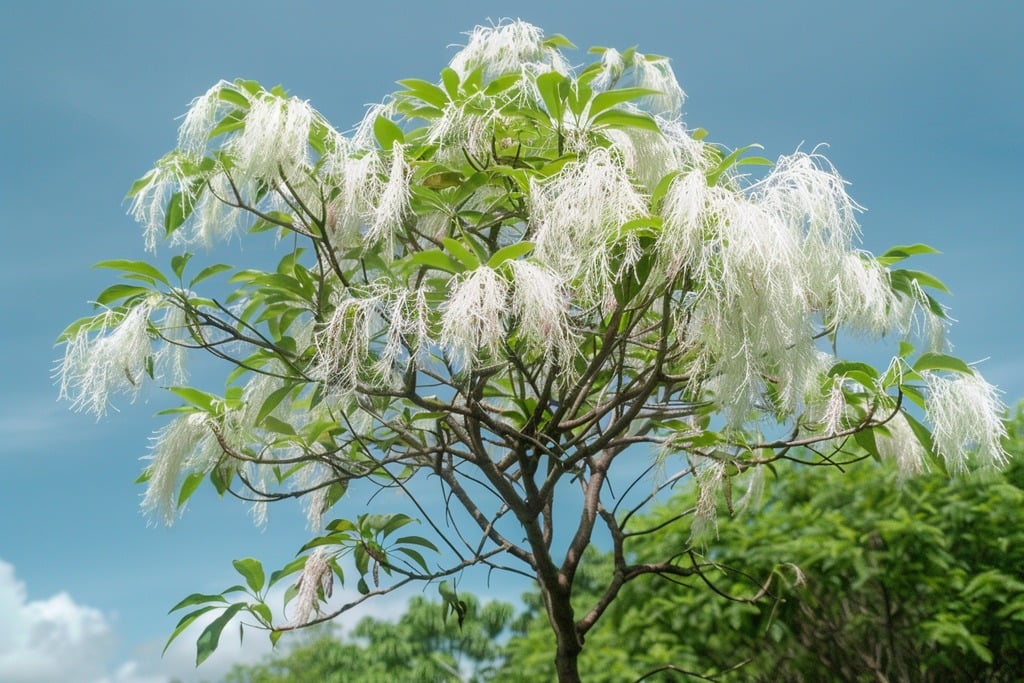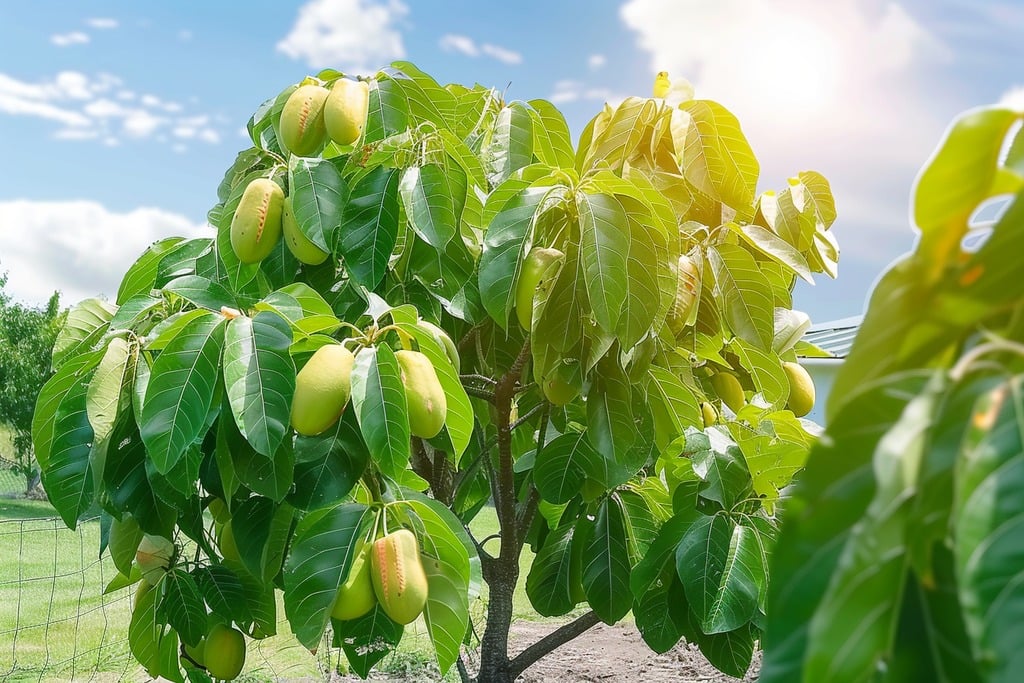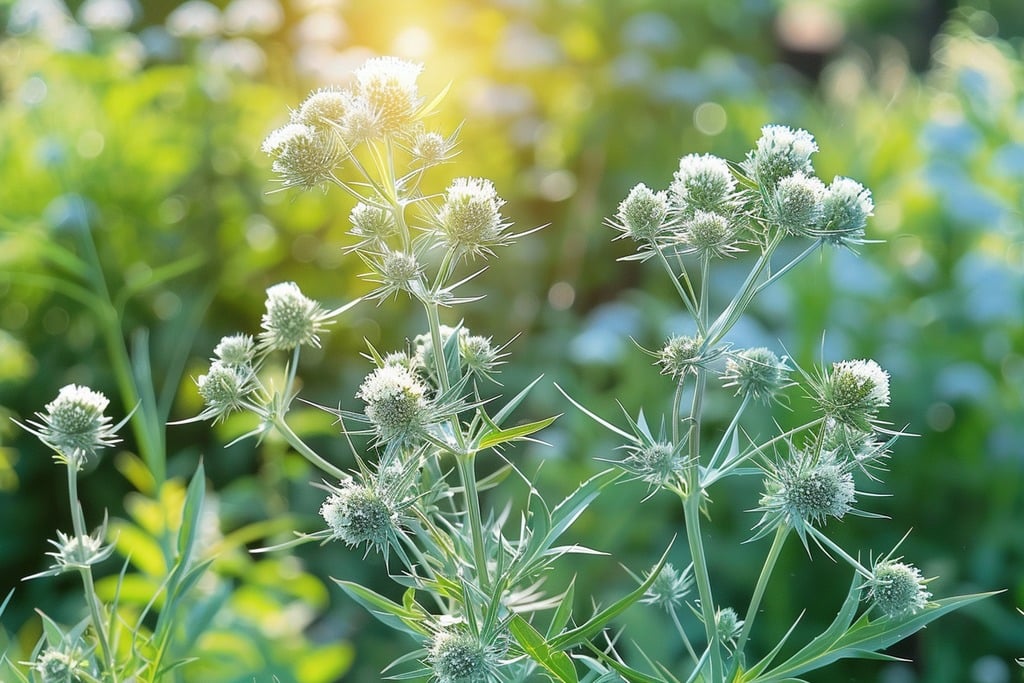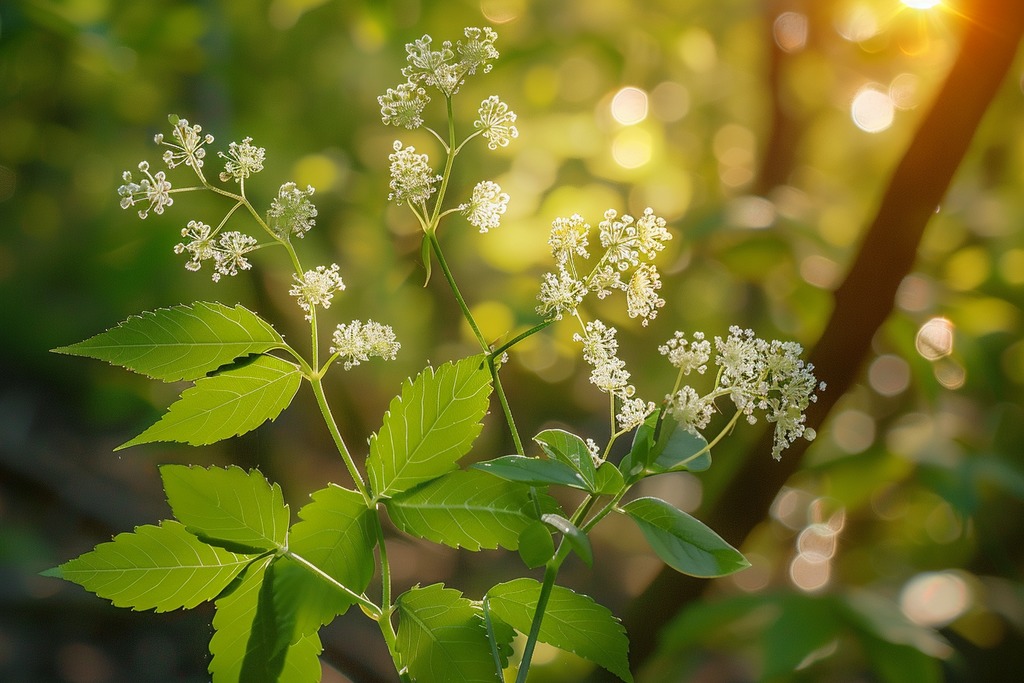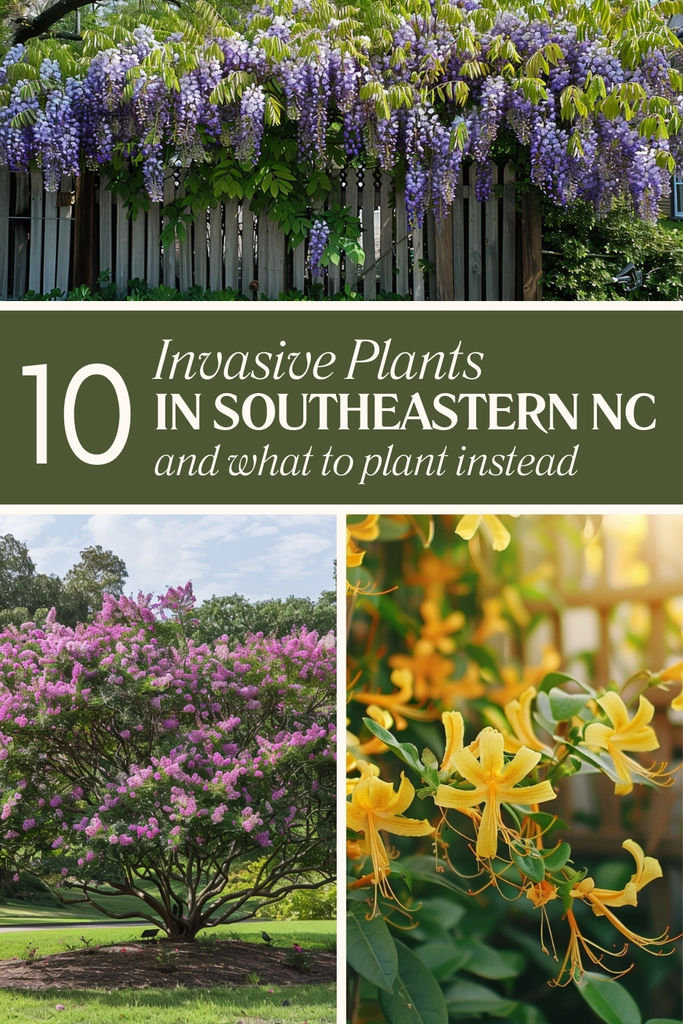In the enchanting landscapes of Southeastern North Carolina, where the air is sweet with the scent of blooming flowers and the scenery is a painter’s dream, there lies a hidden challenge. Amidst the beauty, invasive species have woven their way into the tapestry of the local flora, presenting a silent but significant threat to native biodiversity. These invaders, often introduced for their aesthetic appeal or unintentional stowaways from afar, have found a favorable new home, out-competing native plants and disrupting ecosystems. Today, we spotlight ten such invasive plants, shrubs, and trees that, despite their beauty, are better left out of our gardens in favor of native alternatives.
Please note: The Cameron Team has not been paid or received any other compensation to include any of the products featured on this post, but the author has included affiliate links and content. If you click on a link, they may earn a commission – a high-five for great content!
1. Crepe Myrtles (Lagerstroemia spp.)
These vibrant trees, with their spectacular summer blooms and attractive bark, are a common sight in many Southern landscapes. However, Crepe Myrtles are not native to North America (East Asia is their origin) and can spread aggressively in certain areas, overshadowing native species that play crucial roles in local ecosystems.
Alternative: Eastern Redbud (Cercis canadensis)
Instead, plant an Eastern Redbud (Cercis canadensis). This small to medium-sized tree heralds the arrival of spring with a spectacular display of pink to magenta flowers that burst forth directly on its branches, even before the leaves emerge. The Eastern Redbud’s heart-shaped leaves and graceful form add to its charm, making it a beloved choice for gardens and landscapes aiming to showcase native beauty.
Alternative: Flowering Dogwood (Cornus florida)
Another option is the Flowering Dogwood (Cornus florida). It is perhaps one of the most iconic trees of the Eastern United States, and while traditionally admired for its white flowers, there are varieties that boast pink blooms. The Flowering Dogwood’s bracts, which are often mistaken for petals, range from pure white to soft pink, enveloping the landscape in a cloud of color. As the state flower of North Carolina, the Dogwood holds a special place in the heart of its residents, symbolizing the intrinsic beauty and resilience of the region.
2. Chinese and Japanese Wisteria (Wisteria sinensis & Wisteria floribunda)
With their mesmerizing cascades of purple and white flowers, these wisterias have captivated many. Yet, their beauty belies an aggressive nature; these climbing vines can overtake trees and shrubs, suffocating and weakening native plants with their relentless growth.
Alternative: American Wisteria (Wisteria frutescens)
One of the most fitting native alternatives to the Japanese Wisteria for those in North Carolina is the American Wisteria. This species is native to the southeastern United States, including North Carolina, and shares many of the desirable traits of its Asian counterparts without the same invasive tendencies. The American Wisteria produces beautiful, fragrant, purple-blue flower clusters, albeit slightly smaller than those of the Japanese Wisteria. It grows more slowly and is less aggressive, making it easier to manage and a more environmentally friendly option for gardens and landscapes. By choosing American Wisteria, gardeners can enjoy the classic beauty of wisteria vines while promoting native flora.
3. Nandina (Nandina domestica)
Also known as heavenly bamboo, Nandina is prized for its colorful berries and evergreen foliage. Despite its popularity, it’s an invasive species that spreads easily and poses a threat to birds, as its berries can be toxic to them. It’s a good rule of thumb to never plant any kind of bamboo in North Carolina, because it will not only become a nuisance to you but also to your neighbors.
Alternative: Winterberry (Ilex verticillata)
Winterberry is an excellent native alternative to Nandina domestica. Unlike the evergreen Nandina, Winterberry is deciduous, but it more than makes up for this with its showy, bright red berries that adorn the plant in the fall and winter, offering a stunning visual display. Winterberry is a holly, and like other hollies, it requires both male and female plants to produce berries. It’s an adaptable plant that can thrive in a range of conditions from full sun to partial shade and prefers moist, acidic soils. In addition to its decorative appeal, Winterberry provides valuable food for birds in the winter.
Alternative: American Beautyberry (Callicarpa americana)
American Beautyberry is a native shrub well-known for its striking clusters of purple berries that encircle its stems in the fall and winter. While it offers a different color palette than Nandina, its unique appearance provides an eye-catching display that can stand out in any garden or landscape setting. American Beautyberry prefers well-drained soils and can thrive in both sun and partial shade. It’s also valued for its ability to attract birds and other wildlife.
4. English Ivy (Hedera helix)
This classic vine, often seen climbing the walls of prestigious universities and quaint cottages, may look harmless but is anything but. English Ivy clings tightly to surfaces, damaging structures, and its dense ground cover prevents native plants from flourishing.
Alternative: Virginia Creeper (Parthenocissus quinquefolia)
Virginia Creeper is an excellent native vine that can serve as a substitute for English Ivy. It is known for its beautiful green foliage that turns a spectacular red in the fall, offering seasonal interest. While it can climb surfaces with its tendrils, it is generally less aggressive than English Ivy and easier to manage. Virginia Creeper also produces small berries that are valuable food sources for birds and other wildlife. Be forewarned, Virginia Creeper does have thorns so it wouldn’t be wise to plant it in high-traffic areas.
Alternative: Woodvamp (Decumaria barbara)
Woodvamp, or climbing hydrangea, is another native vine that can be used as an alternative to English Ivy. It offers a similar lush, green appearance and has the added benefit of producing attractive white flower clusters in the spring. Woodvamp is well-suited for shady areas, making it an excellent choice for under-tree cover or north-facing walls, similar to the environments where English Ivy thrives.
Alternative: Allegheny Spurge (Pachysandra procumbens)
Allegheny Spurge is a native ground cover that offers an alternative to the English Ivy’s use for covering large areas of ground. It produces attractive, mottled leaves and small, fragrant flowers in early spring. Allegheny Spurge is well-adapted to shaded environments, making it ideal for woodland gardens or shaded backyard areas.
5. Liriope (Liriope muscari)
Liriope, with its grass-like appearance and purple flowers, is a popular ground cover. However, it spreads rapidly through its rhizomes and seeds, outcompeting native groundcovers and altering soil chemistry.
Alternative: Sedges (Carex spp.)
The Carex genus, or sedges, offers a wide variety of species that are native to North Carolina and can serve as excellent alternatives to Liriope muscari. Sedges are versatile, with many species thriving in conditions ranging from dry shade to wet soils, making them suitable for a variety of landscape applications. Carex pensylvanica, for instance, is a popular choice for dry, shaded areas, offering fine-textured foliage that forms dense tufts, somewhat similar in appearance to Liriope but with a softer texture.
Alternative: Pink Muhly Grass (Muhlenbergia capillaris)
Pink Muhly Grass is a native ornamental grass renowned for its striking clouds of pink to lavender flowers that appear in the fall. It’s an excellent choice for adding color, texture, and height to the landscape. While it serves a different function than Liriope as a ground cover, Pink Muhly Grass can be used in mass plantings to create a visually stunning effect in the garden, especially in areas where a splash of color is desired.
6. Privet (Ligustrum spp.)
Privet hedges may offer privacy and structure in gardens, but these fast-growing shrubs are invasive. They spread easily and dominate understoreys in forests, pushing out native species vital for wildlife habitat.
Alternative: Inkberry (Ilex glabra)
Inkberry is a native evergreen shrub that offers a fantastic alternative to privet. It bears glossy, dark green leaves and produces small, black berries that attract birds and other wildlife. Inkberry can be pruned into a dense, rounded shape, making it an excellent choice for hedges and foundation plantings. It’s adaptable to a range of soil types and conditions, though it prefers wetter soils, making it particularly suitable for low-lying areas or rain gardens.
Alternative: Southern Wax Myrtle (Morella cerifera)
Southern Wax Myrtle is another versatile native shrub that can serve as an alternative to privet. It features aromatic, evergreen foliage and produces attractive blue-gray berries on female plants. Wax Myrtle can grow quickly to form dense screens or hedges, and it is tolerant of a variety of conditions, including dry soils and salt spray, making it a great choice for coastal landscapes as well as general garden use.
Alternative: Summersweet (Clethra alnifolia)
Summersweet is a deciduous shrub known for its fragrant, white or pink flowers that bloom in late summer, providing interest at a time when many other plants have finished flowering. It is an excellent choice for naturalistic plantings or as a privacy screen in part-shade to shade conditions. Summersweet thrives in moist, acidic soils and is a great option for areas near water bodies or in rain gardens.
7. Bradford Pears (Pyrus calleryana)
Once a favored ornamental tree for its fast growth and beautiful spring flowers, the Bradford Pear has proven to be too successful, spreading aggressively and cross-pollinating with other pear varieties to become a nuisance.
Alternative: Flowering Dogwood (Cornus florida)
The Flowering Dogwood is a quintessential native tree of North Carolina, known for its stunning white or pink spring flowers, attractive red berries that feed wildlife, and brilliant red fall foliage. This small tree thrives under the canopy of larger trees or in open areas and is suited to similar landscape uses as the Bradford Pear, including as a specimen or understory tree.
Alternative: Serviceberry (Amelanchier arborea)
Serviceberry, also known as Juneberry, is a versatile native tree or large shrub that offers multi-season interest with white spring flowers, edible berries in early summer, and vibrant fall foliage. Its adaptability to a range of soil types and conditions, including partial shade, makes it a suitable replacement for Bradford Pear in residential landscapes and naturalized areas.
Alternative: Sourwood (Oxydendrum arboreum)
Sourwood is prized for its fragrant white summer flowers that resemble lily-of-the-valley, striking fiery red fall foliage, and interesting winter silhouette. Although it prefers acidic, well-drained soils, Sourwood can adapt to various conditions and serves as an excellent ornamental tree for those looking to replace Bradford Pears with a native species that offers unique beauty across seasons.
8. Japanese Honeysuckle (Lonicera japonica)
This sweet-smelling vine may conjure images of summer romance, but its vigorous growth habit and ability to choke out native plants make it a less-than-ideal inhabitant of our landscapes.
Alternative: Trumpet Honeysuckle (Lonicera sempervirens)
The Trumpet Honeysuckle is a native vine that can beautifully adorn fences, trellises, and arbors, providing a lush backdrop or screen with ecological benefits. Unlike the invasive Japanese Honeysuckle, the Trumpet Honeysuckle is native to North Carolina and produces attractive red, orange, or yellow tubular flowers from spring to summer. This plant is especially beloved by hummingbirds and butterflies, offering gardeners the chance to support local wildlife while enjoying a visually appealing landscape feature.
Alternative: Crossvine (Bignonia capreolata)
Another excellent native vine for North Carolina landscapes is the Crossvine. This vigorous climber boasts trumpet-shaped flowers that range in color from yellow to red, creating a stunning visual display from late spring to summer. Crossvine is a hardy plant that can thrive in a variety of conditions and is known for its ability to attract hummingbirds and other pollinators. While it offers a different look from honeysuckle, its ease of care and environmental benefits make it a valuable addition to any garden seeking a touch of vertical interest and vibrant color.
Alternative: Carolina Jessamine (Gelsemium sempervirens)
For a splash of bright yellow, the Carolina Jessamine is a native vine that can light up any garden. Its cheerful, trumpet-shaped flowers bloom in early spring, providing an early source of nectar for bees and other pollinators. Carolina Jessamine is versatile, growing well in full sun to partial shade, and can be used as a climbing vine or a ground cover, depending on the garden design. This plant is an excellent choice for adding color and fragrance while promoting a healthy, balanced ecosystem. Just be careful planting it anywhere pets may wander. It can be toxic to them, so it won’t be a good choice if your animals like to chew on vegetation.
9. Mimosa Tree (Albizia julibrissin)
With its unique pink, fluffy flowers and fern-like foliage, the Mimosa Tree is a sight to behold. Unfortunately, it’s also highly invasive, with a propensity to spread and disrupt native plant communities. It will pop up in yards where there are no immediately adjacent trees. It’s also horrible for allergy sufferers.
Alternative: Fringe Tree (Chionanthus virginicus)
The Fringe Tree, also known as Old Man’s Beard, is a native tree that provides a spectacular display similar in visual impact to the Mimosa Tree. In late spring to early summer, it produces airy, fragrant white flowers that hang in elegant clusters, giving the tree a cloud-like appearance. It’s adaptable to a range of soil conditions, prefers full sun to partial shade, and is drought-tolerant once established. The Fringe Tree’s manageable size and striking floral display make it an excellent choice for residential landscapes.
Alternative: Red Buckeye (Aesculus pavia)
Red Buckeye is a native understory tree or large shrub known for its striking red, tubular flowers that attract hummingbirds and butterflies in spring. The bold floral display and attractive palmate foliage offer a visually appealing alternative to the Mimosa Tree. Red Buckeye prefers moist, well-drained soils but is relatively adaptable and can be planted in full sun to partial shade, making it suitable for a variety of garden and landscape settings.
Alternative: Pawpaw (Asimina triloba)
The Pawpaw is a small native tree known for its large, droopy, tropical-like leaves, which can create a similar textural effect to the Mimosa’s fern-like foliage. In spring, it produces unusual, maroon-colored flowers followed by edible fruits in late summer. The Pawpaw is best suited to shaded or partially shaded areas, making it an excellent choice for underplanting beneath taller trees or in woodland gardens.
10. Queen Anne’s Lace (Daucus carota)
Known also as wild carrot, this delicate-looking flower adds whimsy to fields and roadways. However, it’s an invasive species that can quickly dominate a landscape, pushing out native wildflowers and grasses.
Alternative: Rattlesnake Master (Eryngium yuccifolium)
Rattlesnake Master offers a unique and striking alternative to Queen Anne’s Lace, with its globular, thistle-like flower heads and yucca-like leaves. This native perennial provides a distinct architectural element to the garden, attracting pollinators such as butterflies and bees. It thrives in full sun and well-drained soil, making it an excellent choice for sunny borders, meadow gardens, or naturalized areas.
Alternative: Aniseroot (Osmorhiza longistylis)
Aniseroot is a native woodland perennial that offers delicate, white, umbel-like flowers reminiscent of Queen Anne’s Lace. It prefers shaded to partially shaded conditions, making it suitable for woodland gardens or shaded borders. Its anise-scented roots and foliage add an aromatic dimension to its appeal.
Alternative: Golden Alexander (Zizia aurea)
Golden Alexander is a native perennial that offers a different color palette with its bright yellow, umbel-shaped flowers. While the color differs from the white of Queen Anne’s Lace, it provides a similar delicate texture and form. Golden Alexander is versatile, tolerant of various soil types, and prefers full sun to partial shade. It’s particularly attractive to pollinators, including butterflies and bees, making it an excellent choice for a pollinator garden or meadow planting.
The Importance of Choosing Native Plants
So, why should we give these invaders the cold shoulder and opt for native plants instead? Native plants are the backbone of local ecosystems. They’ve evolved alongside local wildlife, providing essential food and habitat. They’re adapted to the local climate and soil conditions, requiring less water and care than many non-native species. By choosing natives, we support not only the beauty of our gardens but also the health and sustainability of our environment.
The Benefits of Planting Native Species
- Support Local Wildlife: Native plants offer the best support for local birds, bees, butterflies, and other wildlife, providing them with the necessary nutrients and habitat.
- Lower Maintenance: Adapted to the local climate, native plants typically require less water, fewer fertilizers, and minimal care compared to non-natives.
- Prevent Erosion: Their deep root systems help to stabilize the soil and manage rainwater runoff.
- Enhance Biodiversity: Encouraging a variety of native plants helps to maintain a balanced and resilient ecosystem.
In conclusion, while the allure of exotic plants can be tempting, the long-term health and beauty of our landscapes depend on a commitment to native planting. By choosing native species, we contribute to the preservation of Southeastern North Carolina’s unique biodiversity and ecological heritage. Let’s embrace the native beauty of our region, one garden at a time.
Remember, every plant in our garden tells a story. Let’s make it a story of harmony with nature, not one of conquest.



